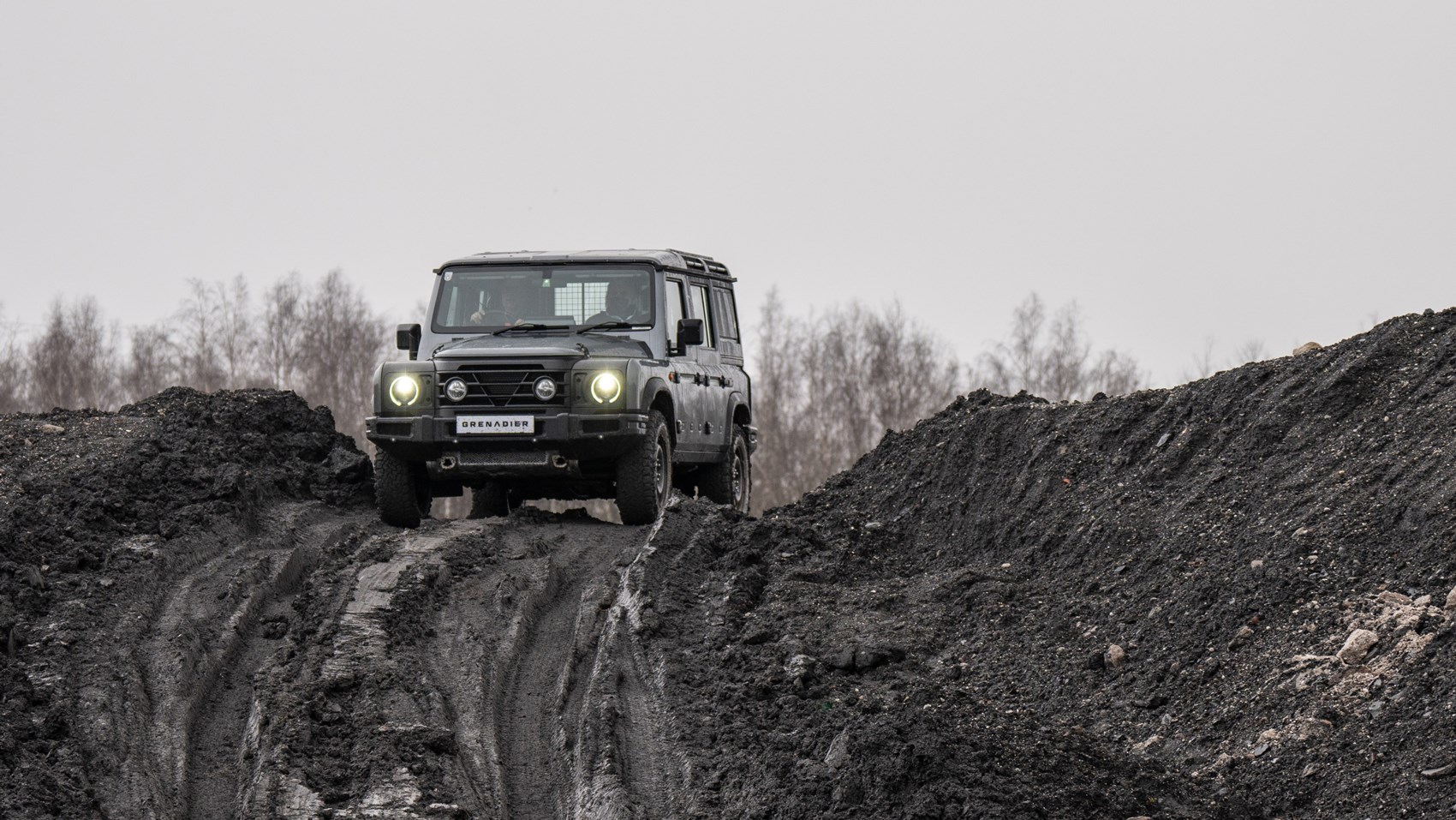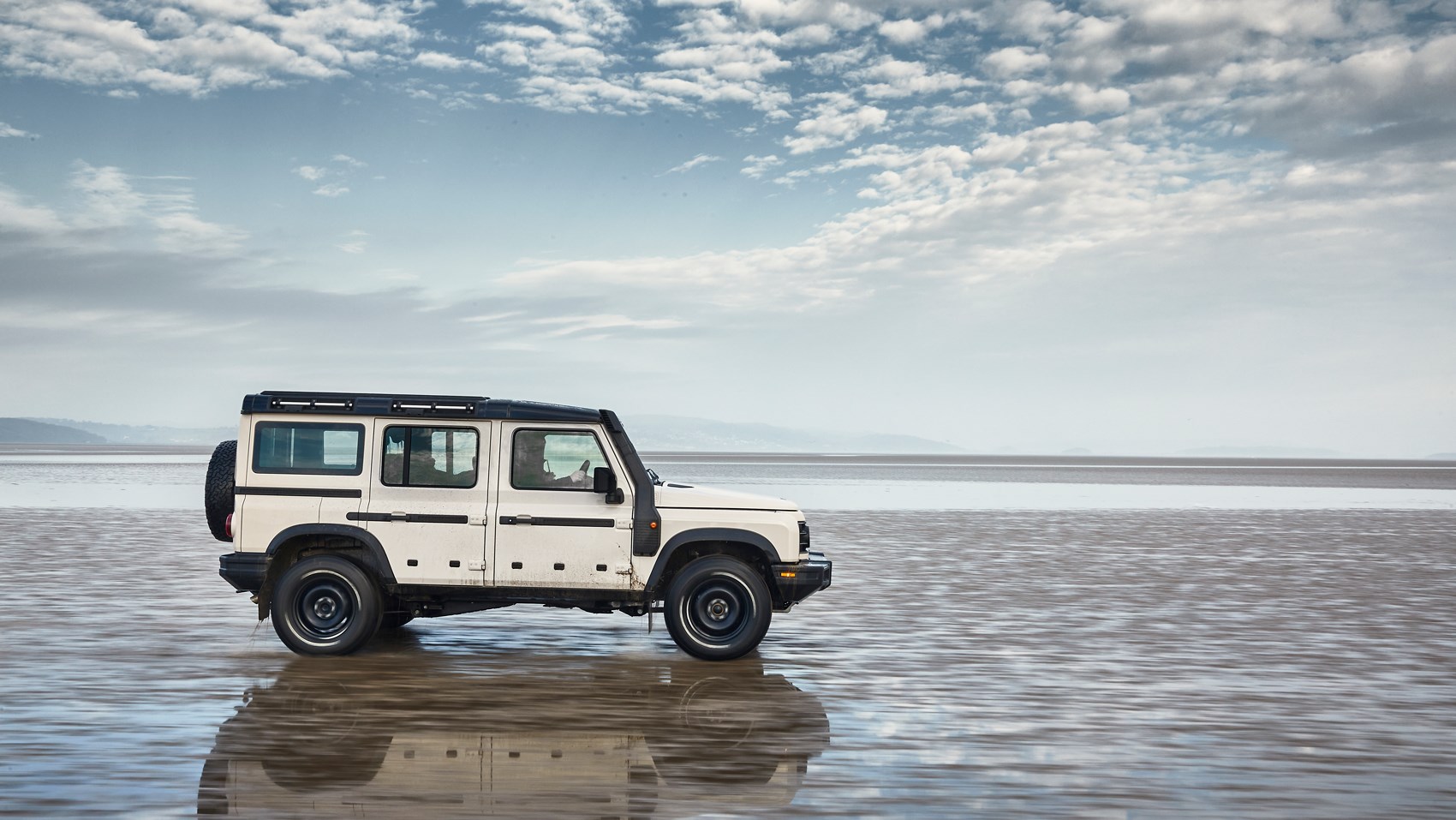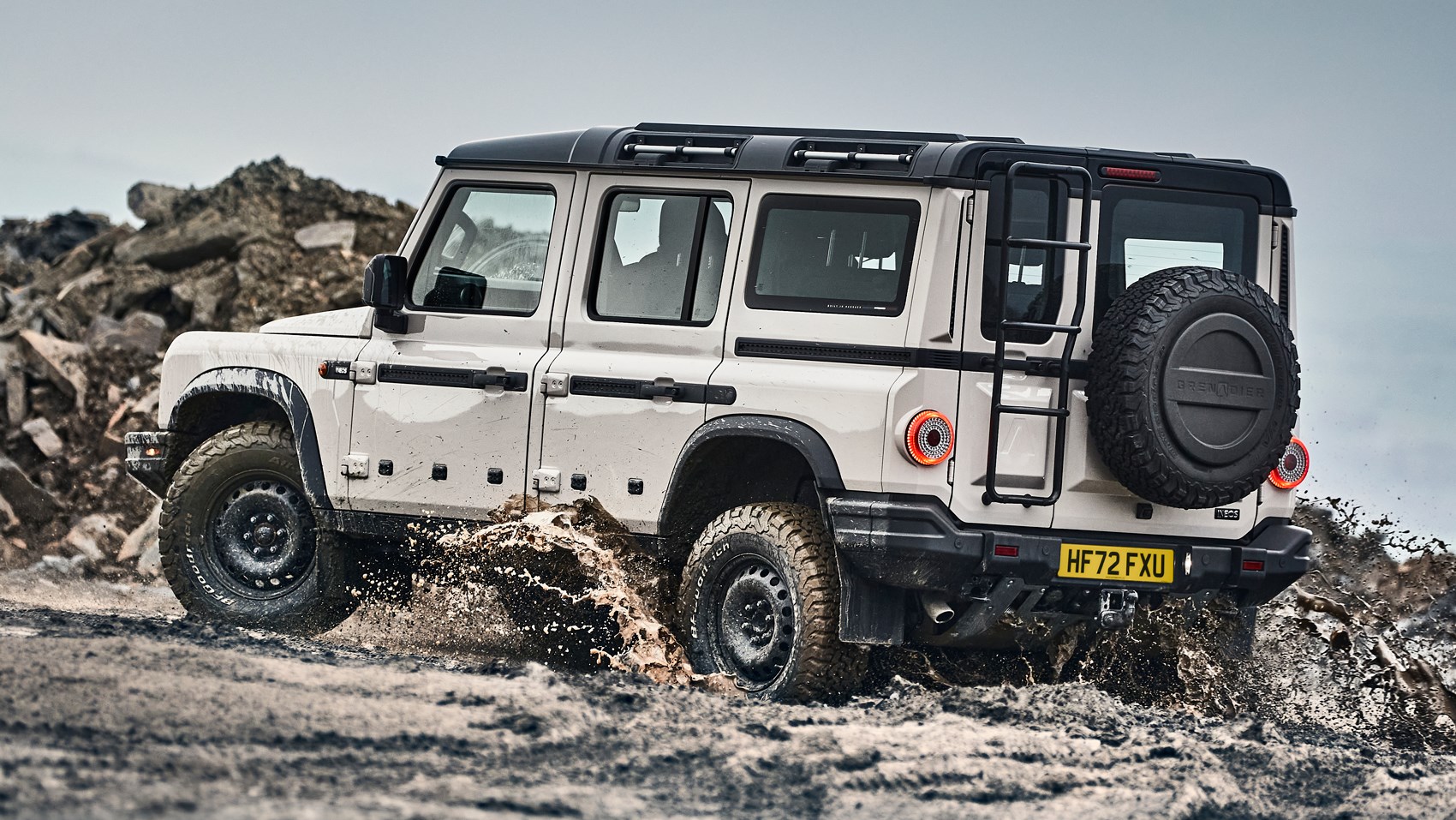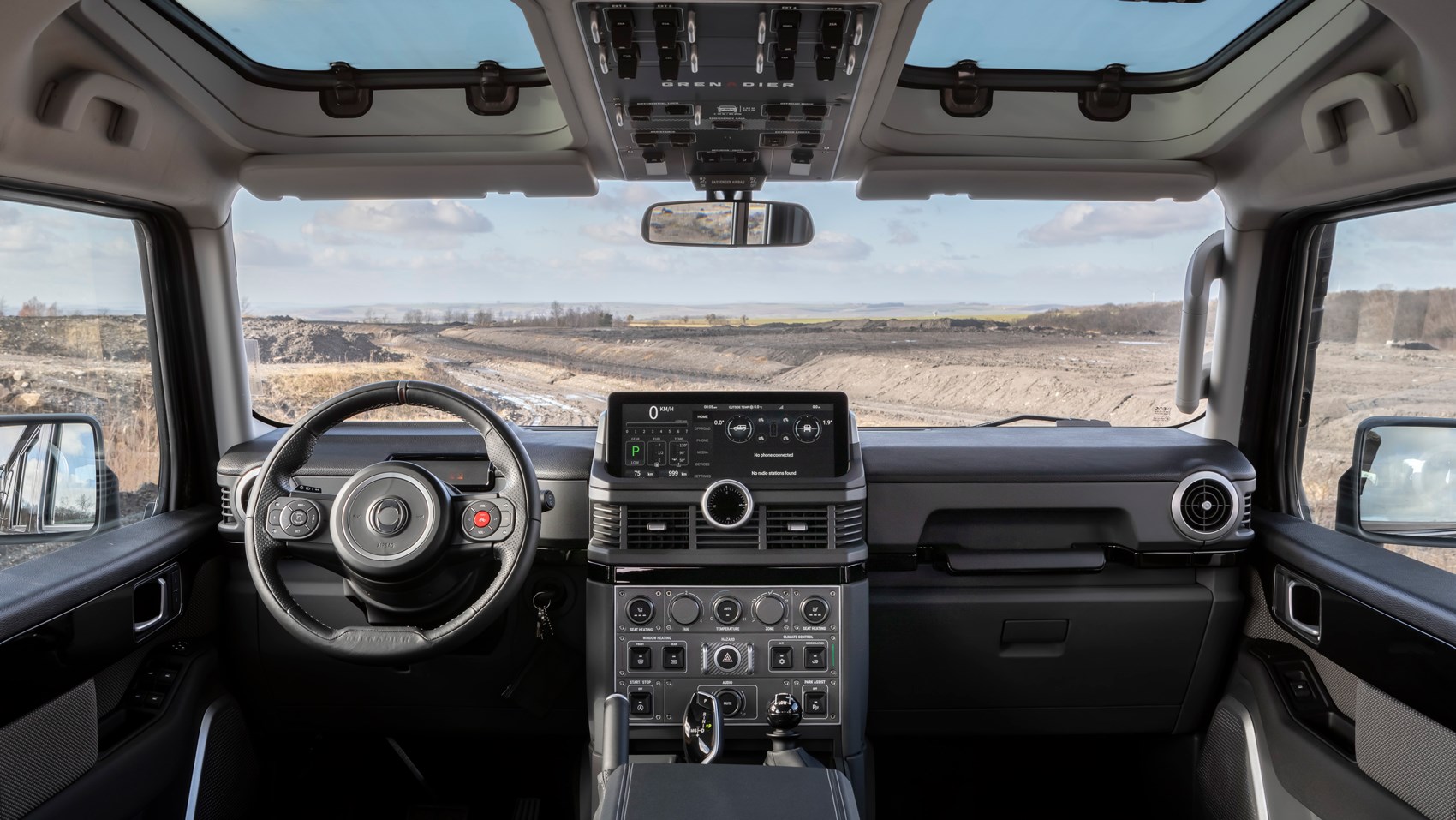► Production version of new 4×4 driven on and off road
► Petrol and diesel engines from BMW
► Traditional looks and proven off-roading tech
Let’s cut to the chase. The car is fine. The newly assembled Ineos Automotive team have done a good job with their first vehicle, the Grenadier. The question mark isn’t hovering over the car. It’s the driver that’s in doubt.
Because Ineos has built exactly what it set out to build: a new car in the spirit of the old Land Rover Defender. That was discontinued in 2016, and there’s a long list of reasons why it was discontinued. Ineos boss Sir Jim Ratcliffe wasn’t much interested in those reasons, because they were mostly about the car’s lack of on-road sophistication. Sir Jim is a keen off-roader, and in that sense he’s built a car for himself, and (if his projections are correct) for the many thousands of others who share his tastes.
So let’s be clear about what this car is, and about who you are. If you’ve driven a G-prefixed Mercedes or a Q-model Audi or any of BMW’s fine X-cars you might think you’re a 4×4 type of person, a maverick soul looking for adventure. Roads? Where we’re going we don’t need roads! But those premium SUVs are all essentially road cars with some off-road ability. The Grenadier flips the equation around. Where compromises have needed making, they’ve been made in favour of off-road ability. When you’re in the Outback or the Namibian desert or throwing up some rooster tails through volcanic ash, you’ll be delighted that the Grenadier is so tough and so simple. But on the M1 or the North Circular or the A66… not so much.

Rewind a bit. What exactly is the Grenadier?
Initially two versions are available in the UK, the Station Wagon and Utility Wagon, each with the choice of petrol or diesel engine. They have the same wheelbase and mechanical fundamentals.
The traditional SUV is the five-seat Station Wagon. This follows the same general format as the Mercedes G-Class and current Land Rover Defender 110. The boot capacity is 1152 litres, or 2035 litres with the split-folding rear seat down.
Then there is the Utility Wagon version, aimed more at people who use their Grenadier for work. It has blanked-out rear windows and a more spartan loadbay, with 2088 litres of luggage space. (In some markets there’s also a five-seat Utility Wagon, which has 1255 litres of carrying capacity, and slightly less rear passenger room than the Station Wagon.)

The Station Wagon is offered in a variety of trim levels, and there are many options that can be bought individually or in packs. Two special editions are named after rugged off-road motorcycle jackets made by Belstaff, a company owned by Ineos. The Fieldmaster version includes pop-up ‘safari’ sunroofs above driver and front passenger, heated front seats and leather upholstery. The Trialmaster version is for extreme off-roading, with a snorkel, 17in alloy wheels, front and rear diff locks and a rear-mounted ladder for easy roof access.
In the UK, Grenadier prices start at £55,000 for the Utility Wagon and £58,000 for the Station Wagon (the same for petrol and diesel), but most orders are for the Belstaff editions, which start at £69,000.
What’s it like to drive?
That depends which engine you have and where you’re driving. It also depends on your expectations. If your idea of what an SUV should be like is shaped by the BMW X5 or current Defender, you’re likely to find the Grenadier a bit basic on road, and a bit slow. And whatever your expectations, the steering is oddly light and imprecise. But the on-road ride quality is very good, it’s not noisy in the cabin, and the (manually adjustable) seats are comfortable.
On our two-day test, first impressions are not great. Within a couple of miles it’s apparent that the front wipers are poorly designed, leaving a large dirty area next to the A-pillar, which itself is on the chunky side, obscuring a ridiculous amount of the driver’s view. When the low sun breaks through, lowering the visor makes even more of the shallow screen useless.

And the rear view via the central mirror is even worse, as the funky off-centre split of the rear doors blocks your sight of much of the road behind, and the dismal rear wiper arc is unduly concerned with glass that is covered by the spare wheel.
On the road, where the steering feels both light and fidgety, the diesel engine of our first test car feels unsettled, changing gear through the eight-speed auto ‘box with excessive frequency. Which is all a bit odd, as the 3.0-litre six-cylinder BMW engine is a proven unit that does not feel like this in other applications.
Things start to improve when we go off-road, and the weather gets worse. The Grenadier’s permanent all-wheel drive, helped by a hill descent control system, locking centre differential, optional locking front and rear diffs and other electronic aids, works wonders: down a steep and slippery slope to a beach, then along the beach – its rocks strewn with hazardous seaweed – then back up the increasingly deep-rutted and gloopy slope, it’s quite amazing what it can do.
That first day, spent entirely in the diesel, ends with mixed feelings. But the second day – again, a mix of on and off road, but this time with a couple of faster road stretches – is spent in petrol versions. It’s quite a transformation. Yes, the steering still isn’t quite right for road use, and a change of engine obviously doesn’t fix the rotten wipers. But it’s so much smoother, more responsive and seemingly better co-ordinated with the transmission. Off-road, where you might reasonably expect a petrol engine to suffer by comparison with the inherently torquier diesel, it doesn’t feel in any way not up to the task.

There’s nothing so extreme as the beach climb in day two’s off-roading, but there’s mile after mile of bumpy, narrow tracks, often crossed by streams. You could do some of this in a regular car, but only if you were planning to scrap the car later that day. The Grenadier feels very much at home here, taking care of a semi-competent driver who keeps getting distracted by the view.
The figures don’t really tell the story: 0-62mph in 8.6sec for the petrol rather than 9.9sec for the diesel, and a top speed of 99mph in both cases. On the road, the petrol feels significantly quicker and more enjoyable. Neither version is notably economical: 18.9-19.6mpg for the petrol; 23.1-26.9mpg for the diesel.
Talk us around all those levers and knobs…
It’s not fancy inside. The basic Grenadier cabin is designed to get muddy as you go about your business or pleasure, and then wiped down at your leisure. There’s a conventional handbrake, chunky buttons designed for glove-wearing drivers, and an old-school lever for engaging the central diff lock and switching between high and low gear sets.
It comes with cloth, vinyl and plastic, rather than wood and leather, although leather is available. It looks traditional, low-tech and simple although there’s actually more going on than meets the eye.

There are USB slots front and rear. And it’s easy to miss at first glance, but there’s a rotary controller that turns out to be the Ineos badge-engineered version of the BMW iDrive controller. The iDrive operating system is tried and trusted, and makes it easy to adjust nav, entertainment and other functions. But there are also far more buttons than you’ll find in any current BMW.
Some of those buttons are on the overhead control panel built into the roof. It’s one of several Grenadier features inspired more by boats and planes than by other cars, and it both looks good and is easy to use. It houses buttons and switches for functions that you won’t engage at speed, such as the optional front and rear diff locks, off-road mode and downhill assist.

The small screen in front of the driver is only for warning lights, for instance reminding you that you have the diff locked. Everything else is in the central screen.
There are buttons on the steering wheel, but not too many. And they include one marked ‘toot’, which is a low-volume parp on the horn to let cyclists know you’re there. From the driver’s seat, it’s a lot like a less-fancy G-Class.
Ineos Grenadier: verdict
The Grenadier makes sense if you have a clear idea of what it is and what it isn’t. It’s up against the more rugged SUVs – Toyota Land Cruiser, the non-AMG Mercedes G-Class – and pick-ups like the Ford Ranger and Toyota Hilux. In that context, where ruggedness and usability matter more than razor-sharp cornering and head-up displays, it’s a brilliantly executed version of a well-established idea.
The fact that it looks so good is a bonus. But anyone who buys a Grenadier just on the strength of its looks may be in for a disappointment, if they really want something for on-road family use. They might be better off waiting for one of the other vehicles in the Ineos Automotive pipeline.
An electric 4×4 will soon be unveiled in prototype form, and is expected to be in production by 2026. It will look like a slightly smaller Grenadier, and have most of its off-road ability. Hydrogen fuel cells are also being explored. And a deal is in place to replace the current BMW engines with mild-hybrid versions at some point.
A double-cab pick-up version of the Grenadier, using a longer-wheelbase chassis, will follow soon. In the longer term, that long-wheelbase chassis is likely to spawn a seven-seat Station Wagon.
This is a great start. Literally and figuratively, it’s a car that can really take you to some incredible places.